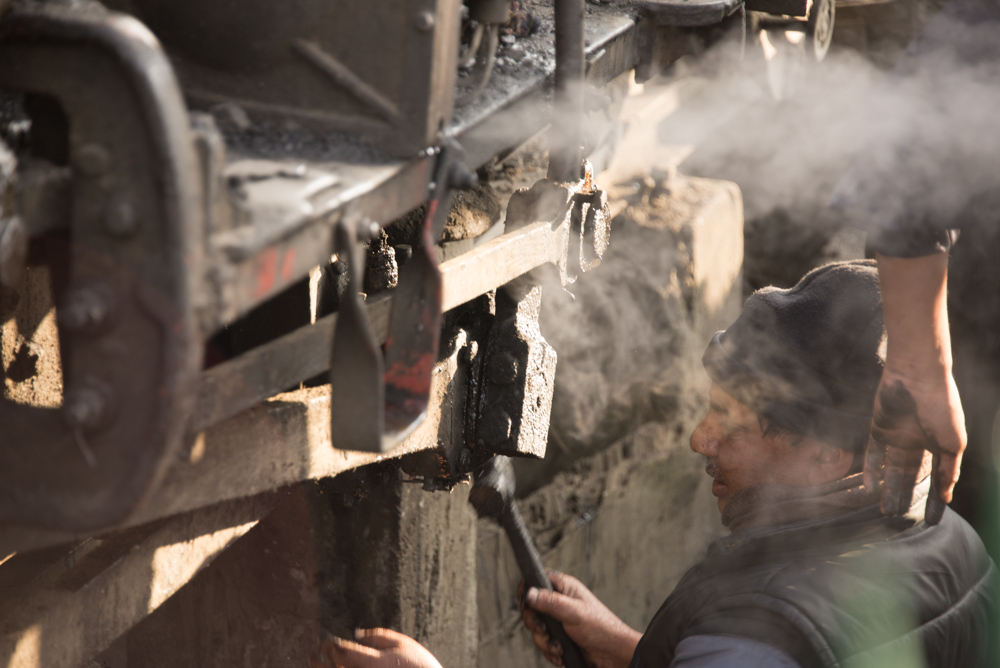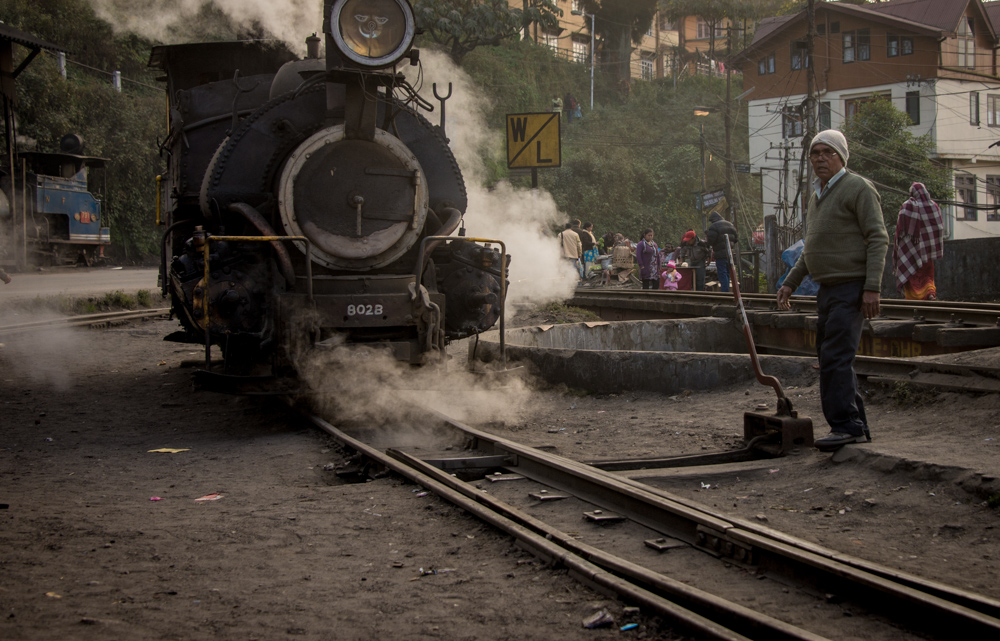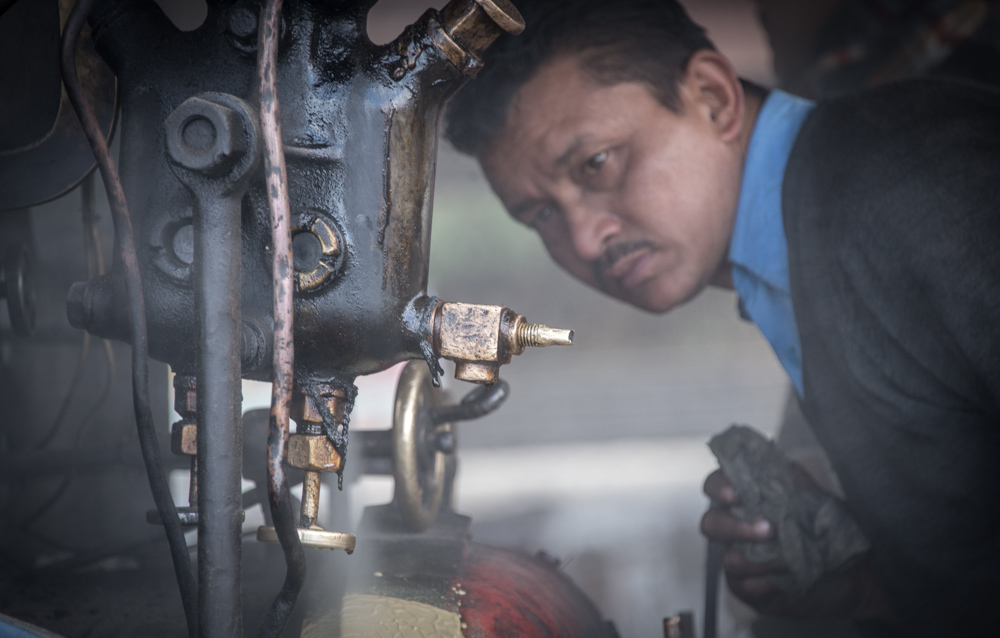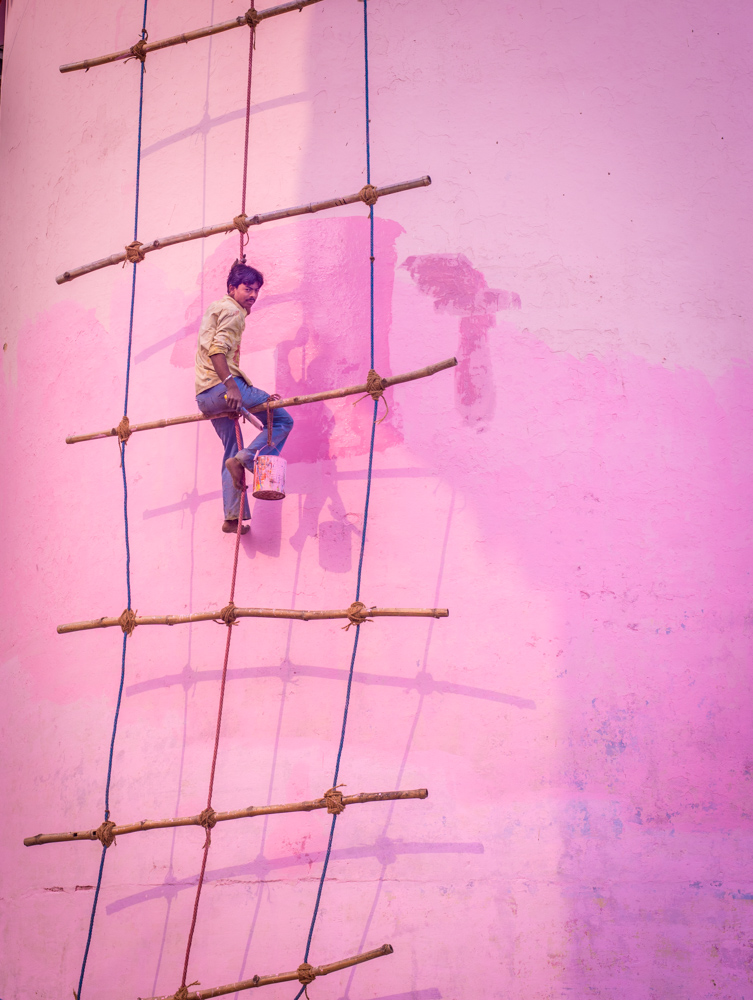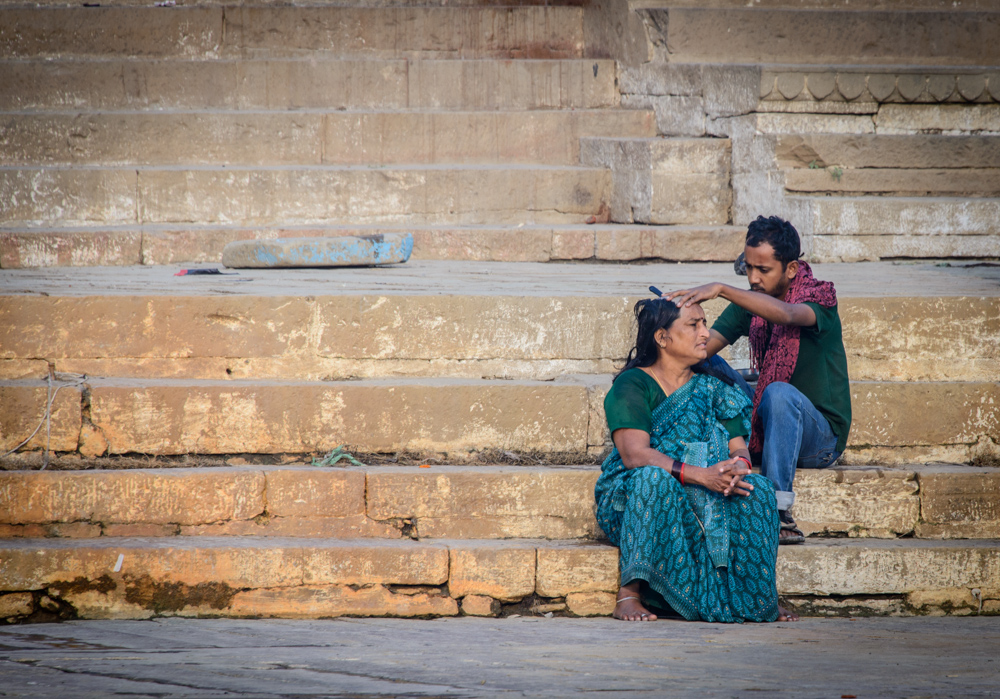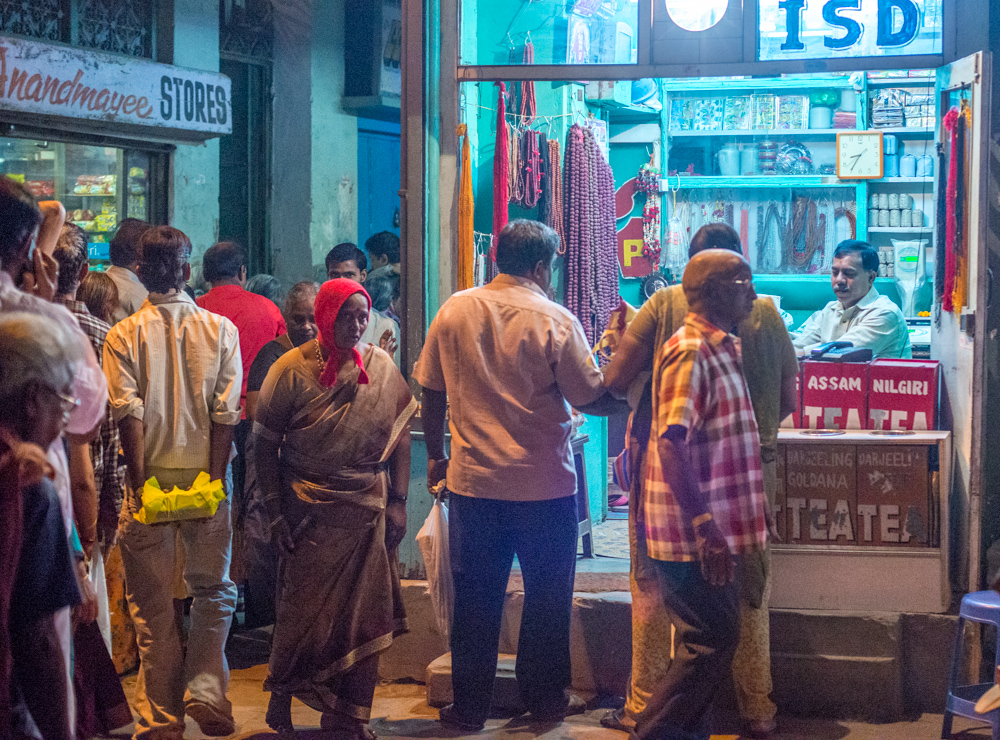Darjeeling is home to the famed Toy Train or more accurately, The Darjeeling Himalaya Railway (DHR). This fascinating train is little changed from when it was originally created in the late 1800's. Confusingly, there are two trains that run on the line that extends from New Jalipuguri in the south to Darjeeling in the north. The first is a diesel powered commuter train that runs the whole distance (or rather, it did, the line has been closed south of Kurseong for some years due to a land slide). The second is a steam powered train that runs back and forth from Darjeeling to Ghum, several times a day.
What makes a trip on this train so interesting is that for most of the journey, it rumbles along the old Hill Cart Road, sometimes only inches from buildings on one side and passing traffic on the other.
Originally built by the British, to transport tea and other goods from the hill station of Darjeeling, the railway was an incredible feat of engineering. The narrow gauge track of only 2 feet was carved out of the hilly terrain and included multiple loops and switch backs. It has hardly changed to this day. The service is maintained by a dedicated workforce who run and maintain the antique trains and track.
The original line was opened in 1881 and the lineclimbs from NJP, at around 100 metres, up to Darjeeling at around 2,200 metres. The section from Ghum, is the most spectacular. The train blows its whistle almost constantly, in an attempt to give itself a clear run among all the obstacles. There are also some fantastic views across the lower Himalayas en route.
Besides a stop for water, shortly after leaving Darjeeling, the train also takes a rest at the Batasia loop, around half way. This has a well manicured garden and great views. Price for the train cost 270 rupees for a return trip Darjeeling - Ghum. Tickets are available at the station in Darjeeling but it's advisable to book a few days in advance as there are only two carriages and they are often full. The ride is popular with Indian tourists as well as foreigners. A round trip takes around four hours. Just be careful not to confuse this train with the regular diesel service. As fun as that is, it's not quite in the same league as sitting behind a puffing and panting Victorian steam engine rattling along the road at what feels like a break neck pace.
The engine driver and his accomplices are forever making adjustments and twiddling with levers and taps. There seems to be a long and well rehearsed ritual to coax the engine in to the right mood for its job. When it pulls out of the station at Darjeeling and crosses the road to the other side, it starts making so much noise it feels more like sitting in a dragon than in small train. Nevertheless, in true Indian fashion, it somehow makes its way along and after a while you stop holding your breath every time the engine scrapes by a car, or house, or pedestrian. It's huge fun and I hope it continues running for another 130+ years.








